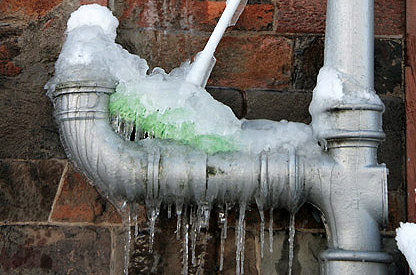Protecting Against Frozen Pipes in Cold Weather: Expert Strategies
Protecting Against Frozen Pipes in Cold Weather: Expert Strategies
Blog Article
They are making a number of good points on Winter Plumbing Precautions: Preventing Frozen Pipes in general in this post on the next paragraphs.

Cold weather can damage your pipes, specifically by freezing pipes. Right here's just how to stop it from occurring and what to do if it does.
Introduction
As temperature levels decline, the risk of frozen pipelines increases, potentially bring about costly repair services and water damages. Understanding exactly how to stop icy pipes is important for property owners in cold climates.
Prevention Tips
Protecting prone pipes
Cover pipelines in insulation sleeves or use heat tape to safeguard them from freezing temperature levels. Concentrate on pipes in unheated or outside areas of the home.
Heating strategies
Maintain indoor rooms adequately warmed, especially locations with plumbing. Open up cabinet doors to enable cozy air to circulate around pipelines under sinks.
How to determine icy pipes
Try to find lowered water flow from faucets, uncommon smells or noises from pipes, and visible frost on revealed pipelines.
Long-Term Solutions
Structural adjustments
Think about rerouting pipelines far from outside wall surfaces or unheated locations. Add added insulation to attic rooms, basements, and crawl spaces.
Updating insulation
Buy top notch insulation for pipes, attics, and wall surfaces. Appropriate insulation aids preserve consistent temperature levels and minimizes the risk of icy pipelines.
Safeguarding Exterior Pipes
Garden pipes and exterior faucets
Detach and drain pipes yard hoses before wintertime. Mount frost-proof faucets or cover outdoor faucets with protected caps.
Recognizing Icy Pipelines
What creates pipes to freeze?
Pipes ice up when exposed to temperatures listed below 32 ° F (0 ° C) for extended periods. As water inside the pipes freezes, it broadens, taxing the pipeline wall surfaces and potentially causing them to rupture.
Dangers and problems
Icy pipes can cause supply of water disturbances, home damage, and expensive repair services. Ruptured pipelines can flooding homes and create extensive structural damage.
Indications of Frozen Water Lines
Recognizing icy pipelines early can stop them from breaking.
What to Do If Your Pipelines Freeze
Immediate activities to take
If you presume icy pipes, keep faucets open to relieve stress as the ice thaws. Utilize a hairdryer or towels soaked in warm water to thaw pipelines slowly.
Conclusion
Protecting against icy pipes calls for positive steps and fast actions. By understanding the reasons, indications, and safety nets, house owners can protect their pipes during cold weather.
5 Ways to Prevent Frozen Pipes
Drain Outdoor Faucets and Disconnect Hoses
First, close the shut-off valve that controls the flow of water in the pipe to your outdoor faucet. Then, head outside to disconnect and drain your hose and open the outdoor faucet to allow the water to completely drain out of the line. Turn off the faucet when done. Finally, head back to the shut-off valve and drain the remaining water inside the pipe into a bucket or container. Additionally, if you have a home irrigation system, you should consider hiring an expert to clear the system of water each year.
Insulate Pipes
One of the best and most cost-effective methods for preventing frozen water pipes is to wrap your pipes with insulation. This is especially important for areas in your home that aren’t exposed to heat, such as an attic. We suggest using foam sleeves, which can typically be found at your local hardware store.
Keep Heat Running at 65
Your pipes are located inside your walls, and the temperature there is much colder than the rest of the house. To prevent your pipes from freezing, The Insurance Information Institute suggests that you keep your home heated to at least 65 degrees, even when traveling. You may want to invest in smart devices that can keep an eye on the temperature in your home while you’re away.
Leave Water Dripping
Moving water — even a small trickle — can prevent ice from forming inside your pipes. When freezing temps are imminent, start a drip of water from all faucets that serve exposed pipes. Leaving a few faucets running will also help relieve pressure inside the pipes and help prevent a rupture if the water inside freezes.
Open Cupboard Doors
Warm your kitchen and bathroom pipes by opening cupboards and vanities. You should also leave your interior doors ajar to help warm air circulate evenly throughout your home.

I discovered that page on How to Prevent Your Pipes From Freezing when doing a search on the search engines. In case you enjoyed our page if you please be sure to pass it around. Thank you so much for going through it.
Information Here Report this page